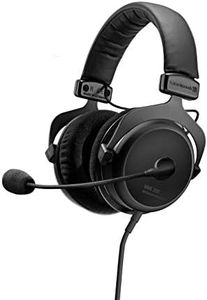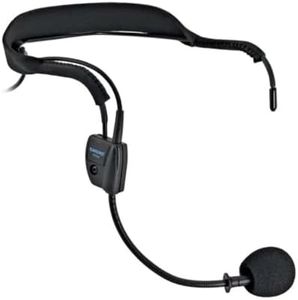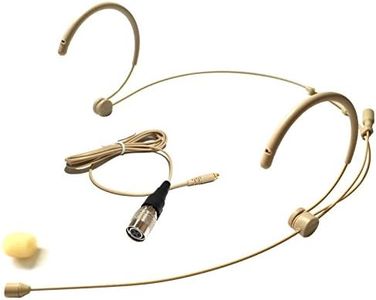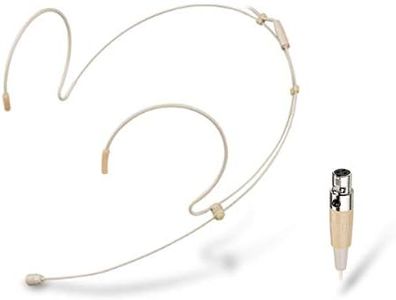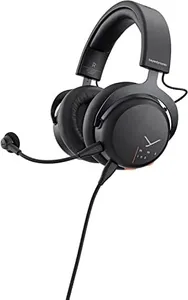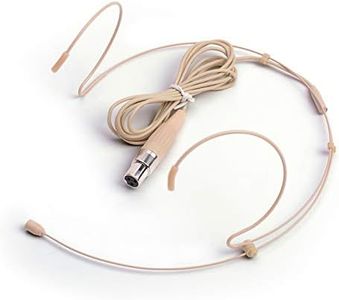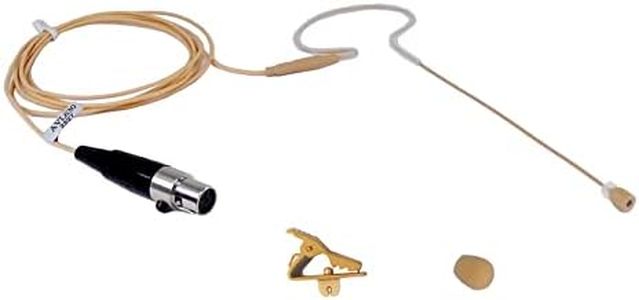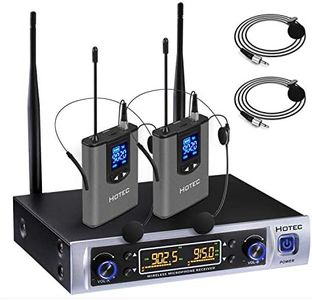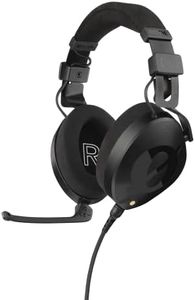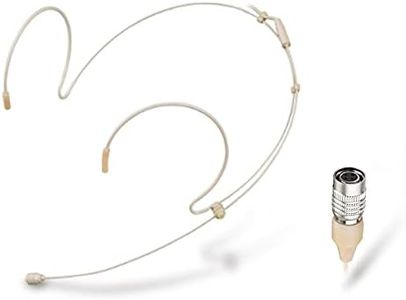We Use CookiesWe use cookies to enhance the security, performance,
functionality and for analytical and promotional activities. By continuing to browse this site you
are agreeing to our privacy policy
10 Best Headset Microphone For Singing
From leading brands and best sellers available on the web.Buying Guide for the Best Headset Microphone For Singing
Choosing a headset microphone for singing is all about finding a model that matches your singing style, performance environment, and comfort preferences. Headset microphones are popular among singers and performers because they keep your hands free and allow you to move around without worrying about your microphone position changing. The right headset will let your voice shine through clearly, reduce background noise, and feel comfortable during long sessions. By understanding the key specifications, you'll be able to make a well-informed choice that suits your singing needs.Microphone TypeHeadset microphones usually come as either dynamic or condenser types. Condenser microphones are more sensitive and pick up a wider range of frequencies, which makes them great for capturing the detail in singing voices, especially in studio or controlled environments. Dynamic microphones are generally tougher and handle high sound pressure levels well, so they're better suited for loud environments or energetic performances. If you sing in a quiet studio or want to showcase vocal nuances, a condenser is often preferable. For live stage performances or when you'll be moving a lot, a dynamic might be more reliable.
Polar PatternThis describes how well the microphone picks up sound from different directions. The most common for headset mics are cardioid (picks up mostly from the front), omnidirectional (from all around), and occasionally supercardioid. Cardioid headsets help reject unwanted background noise, making them good for live singing or noisy environments. Omnidirectional mics capture a natural sound but may pick up more noise, which is fine for quieter places or when you're looking for a more open sound. Choose a polar pattern based on where you'll be singing: go for cardioid in noisy places or omnidirectional in quieter, controlled settings.
Frequency ResponseFrequency response is the range of sound the microphone can capture, measured in hertz (Hz). For singing, you want a headset that covers the full range of the human voice (roughly 80 Hz to 15,000 Hz) so that both low and high notes are clear. Some microphones are tailored for vocals, providing a slight boost in the mid-range for clarity. If your style includes lots of low or high notes, choose a mic with a broad frequency range that matches your unique voice.
Headset Comfort and FitA comfortable fit is crucial, especially if you'll be wearing the headset for long performances or practice sessions. Headsets range from lightweight, barely-there designs to more robust, secure fittings. Some have adjustable bands, ear hooks, or padding for extra comfort. If you tend to move a lot while singing or perform energetic routines, look for secure, sweat-resistant designs. Test out different fits and materials to see what feels best during extended use.
Connectivity (Wired vs Wireless)Headset microphones can be either wired or wireless. Wired headsets offer a stable, reliable connection but may restrict movement, making them better for studio work or stationary performances. Wireless headsets, on the other hand, give you freedom to roam the stage but require batteries and proper setup to avoid interference. Consider how much you'll move during singing—if mobility is important, go wireless, but for stationary vocal work, a wired option is sometimes simpler.
Durability & Sweat ResistanceHeadset microphones, especially those used in active performances, can be exposed to sweat, moisture, and rough handling. Some are designed with special coatings or construction to resist sweat and accidental drops. If your performances are high-energy or take place in warm environments, it’s important to pick a model built to withstand these conditions, so your gear remains reliable show after show.
